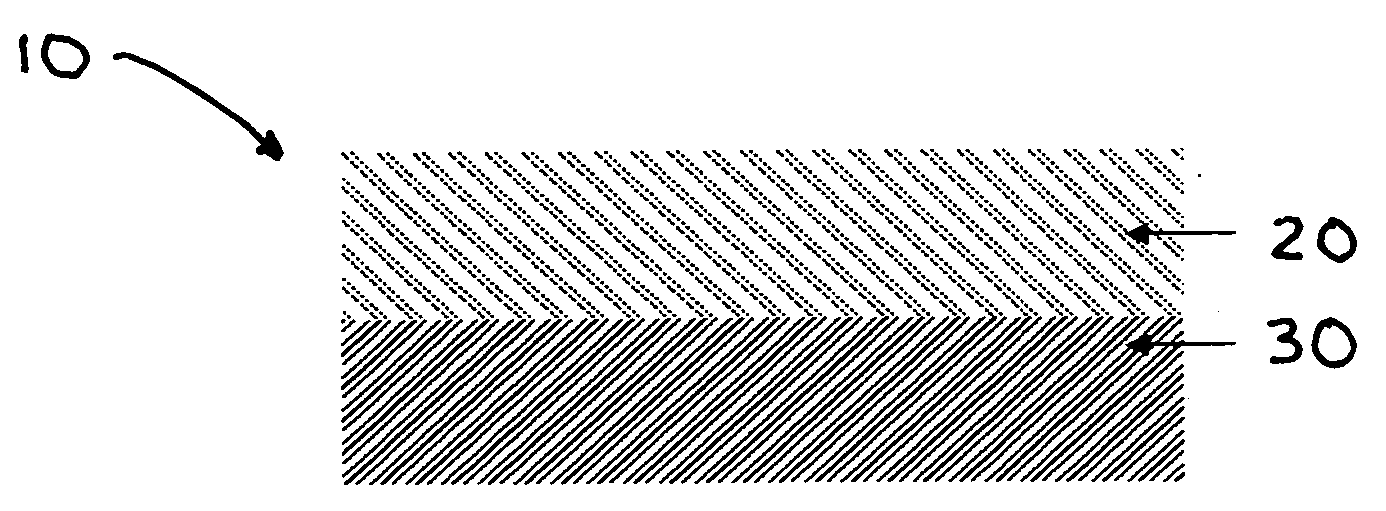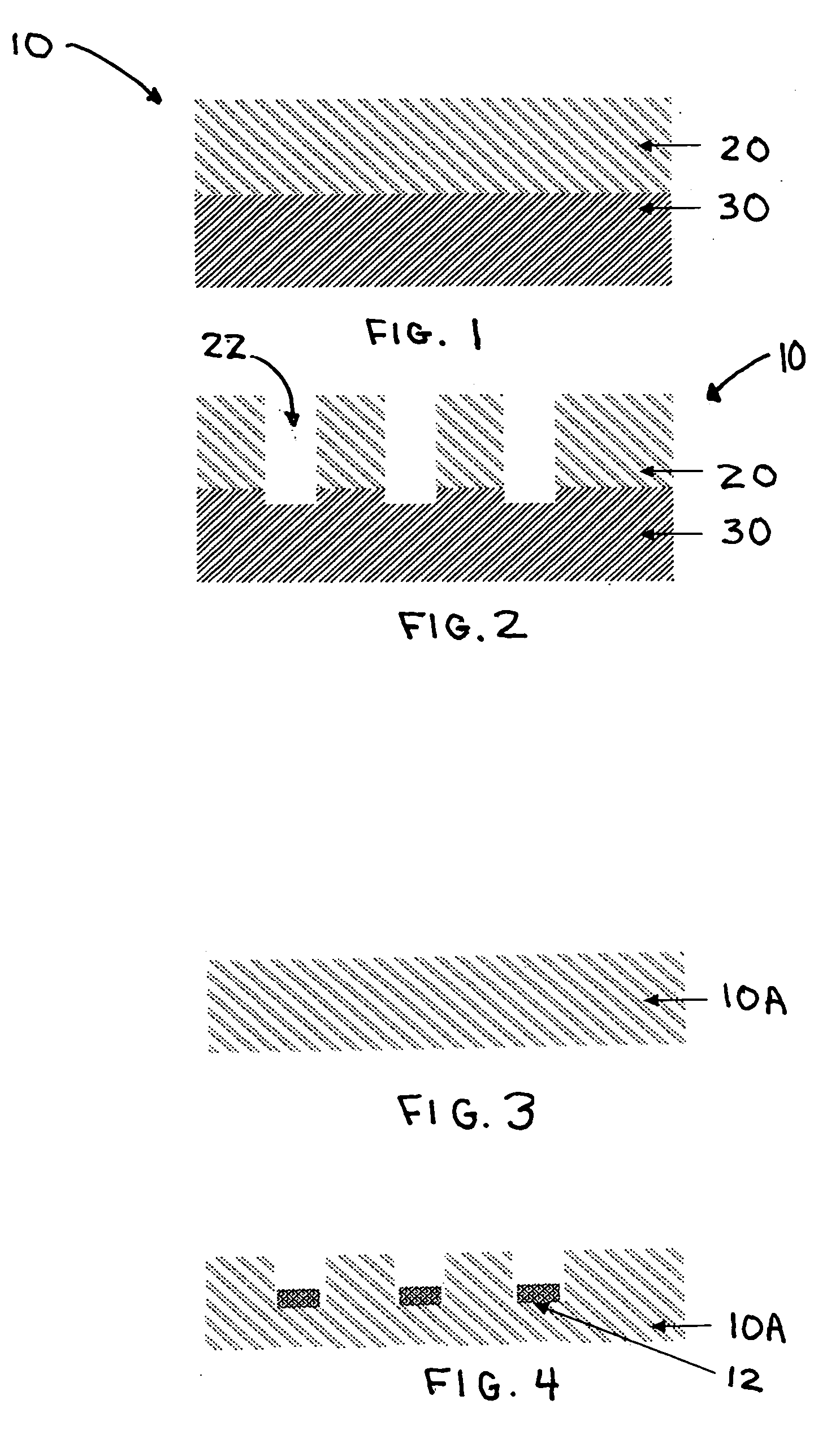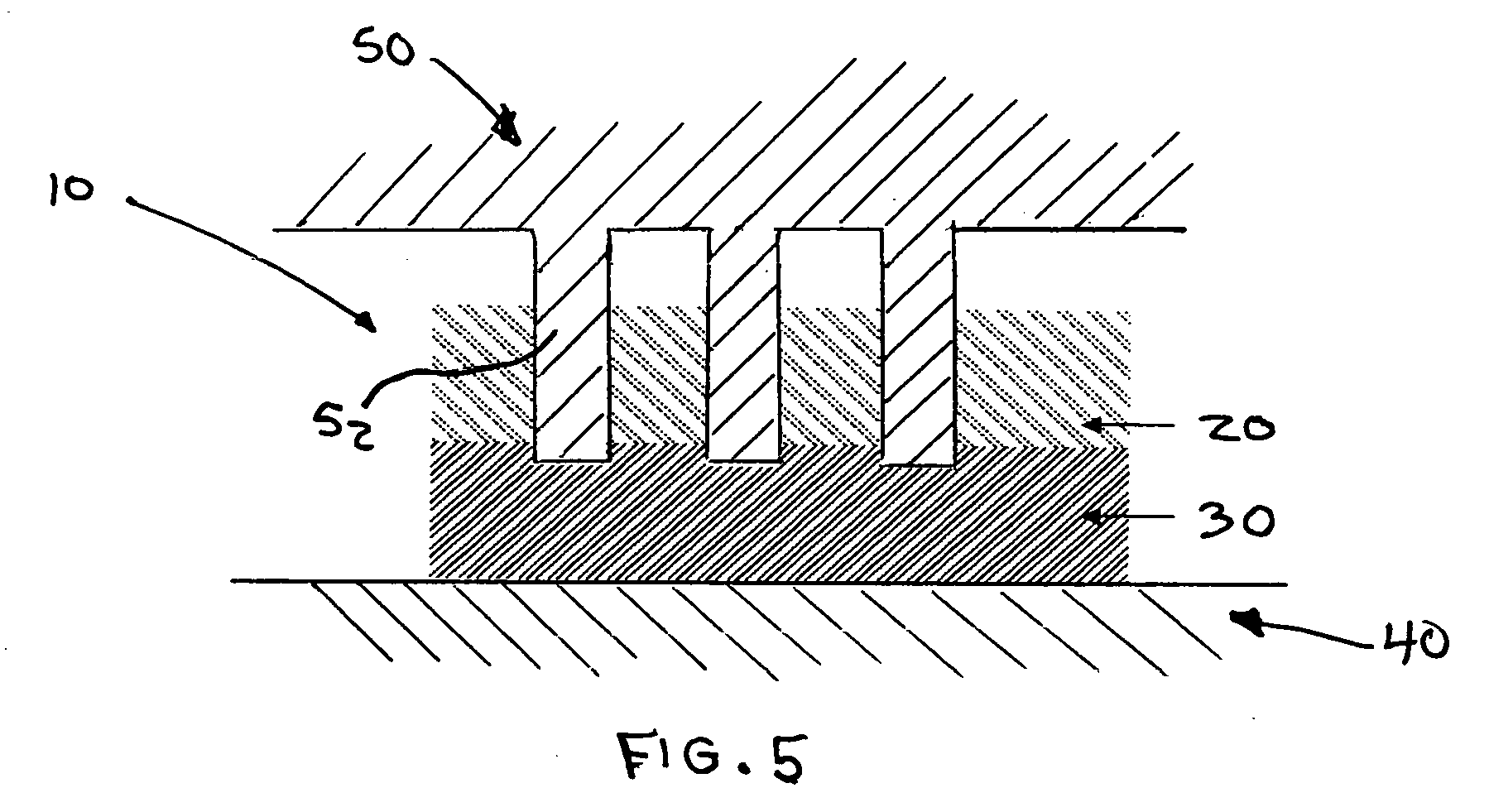Method of forming multi-colored composite by pinsonic embossing
a multi-colored composite and pinsonic technology, applied in the field of multi-colored composites, can solve the problems of not providing a depth aspect to the appearance of the surface, possessing numerous limitations, and forming certain colors
- Summary
- Abstract
- Description
- Claims
- Application Information
AI Technical Summary
Problems solved by technology
Method used
Image
Examples
first embodiment
[0022] For elements common to the various embodiments of the invention, the numerical reference character between the embodiments is held constant, but distinguished by the addition of an alphanumeric character to the existing numerical reference character. In other words, for example, an element referenced at 10 in the first embodiment is correspondingly referenced at 10A, 10B and so forth in subsequent embodiments. Thus, where an embodiment description uses a reference character to refer to an element, the reference character applies equally, as distinguished by alphanumeric character, to the other embodiments where the element is common.
[0023] The use of ultrasonic energy to bond plastic materials together is well known. Similar or even dissimilar plastics may be joined through the use of heat generated from high frequency mechanical motion. The two plastic articles are placed one upon the other in a holding fixture and a titanium or aluminum component called a horn is brought in...
second embodiment
[0033] the present invention is illustrated in FIGS. 3 and 4. Here, a somewhat higher density non-woven layer 10A is provided (for instance, between about 1 and about 11 ounces / square yard). An ultrasonic horn, having a predetermined, decorative pattern, preferably of pins or projections provided on the surface, engages with the upper portion of layer 10A. Upon activation of the ultrasonic energy into the layer, a portion of the layer is melted and densifies or contracts to form a pattern 12 of densified polymer having a different color than that of the original fibrous layer 10A that has not been acted upon by the horn. The densified pattern 12 may be of a different color due to the increased density, due to melting of the polymer and pigments or dyestuffs which color the layer 10A.
[0034] In a related embodiment, heat activatable (thermochromic) pigments or dyestuffs may be used to color layer 10A which when acted upon by the ultrasonic energy are heated to a temperature which caus...
PUM
| Property | Measurement | Unit |
|---|---|---|
| vibration frequency | aaaaa | aaaaa |
| frequency | aaaaa | aaaaa |
| frequency | aaaaa | aaaaa |
Abstract
Description
Claims
Application Information
 Login to View More
Login to View More - R&D
- Intellectual Property
- Life Sciences
- Materials
- Tech Scout
- Unparalleled Data Quality
- Higher Quality Content
- 60% Fewer Hallucinations
Browse by: Latest US Patents, China's latest patents, Technical Efficacy Thesaurus, Application Domain, Technology Topic, Popular Technical Reports.
© 2025 PatSnap. All rights reserved.Legal|Privacy policy|Modern Slavery Act Transparency Statement|Sitemap|About US| Contact US: help@patsnap.com



